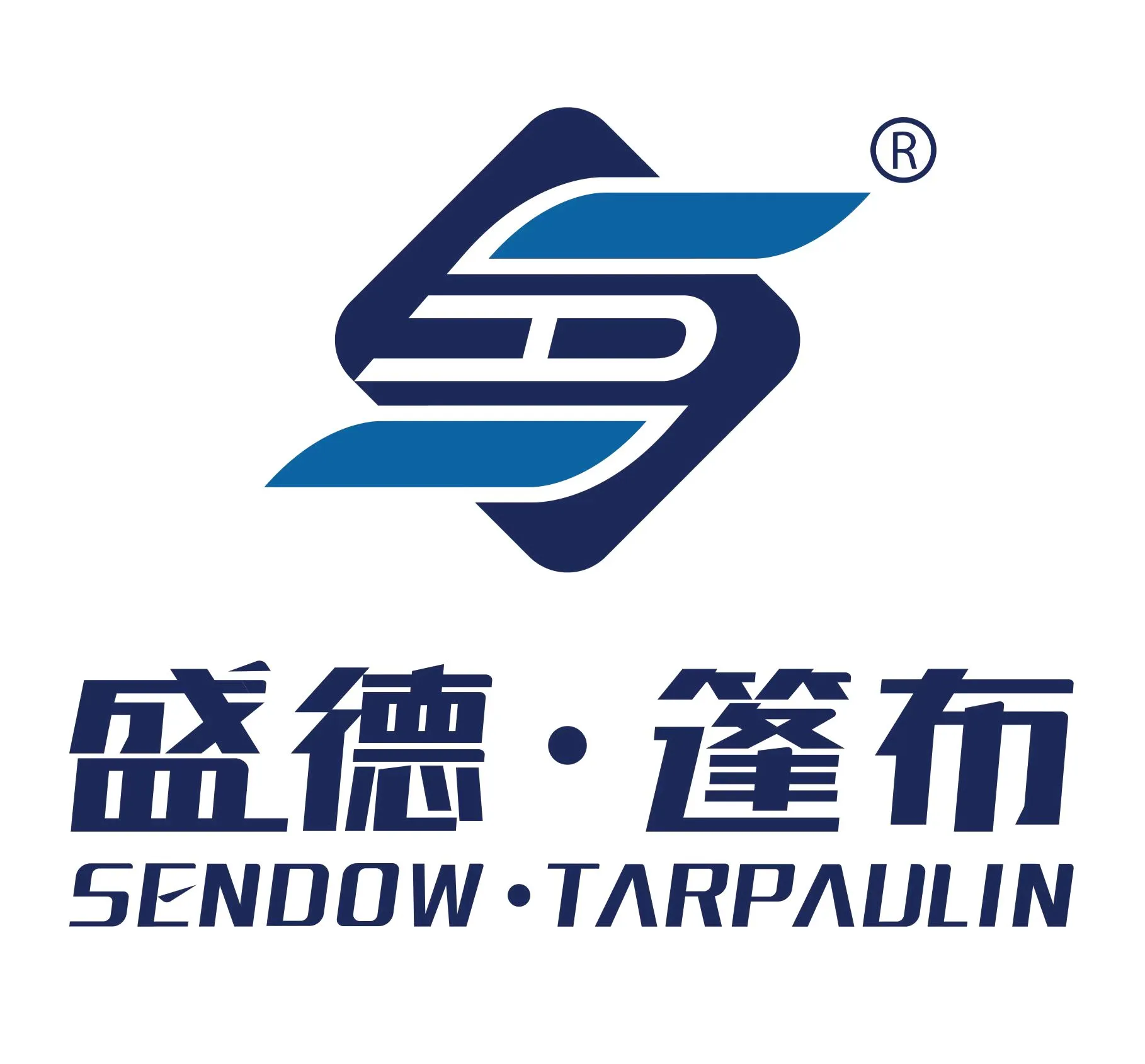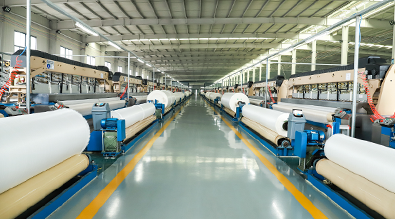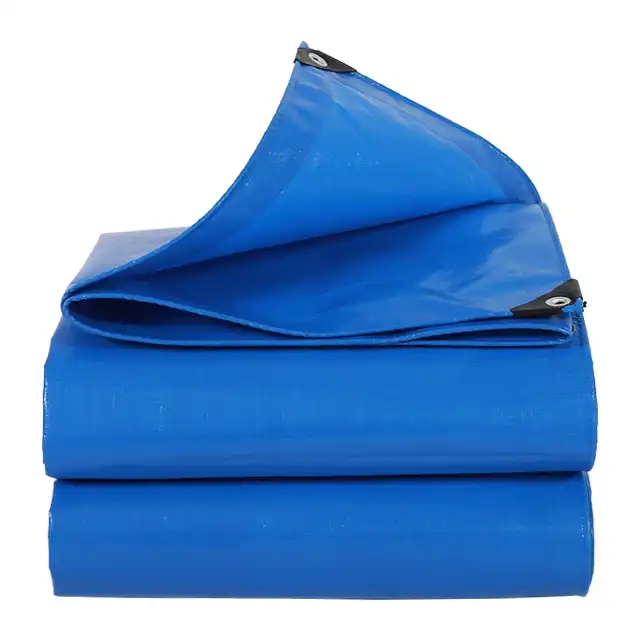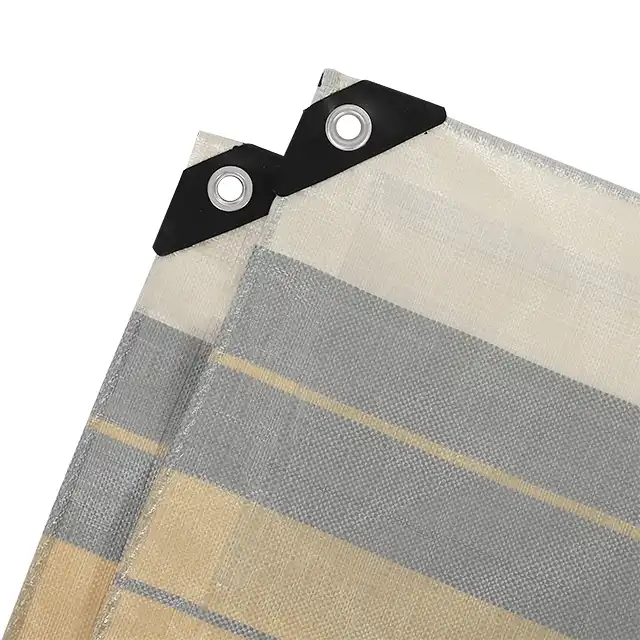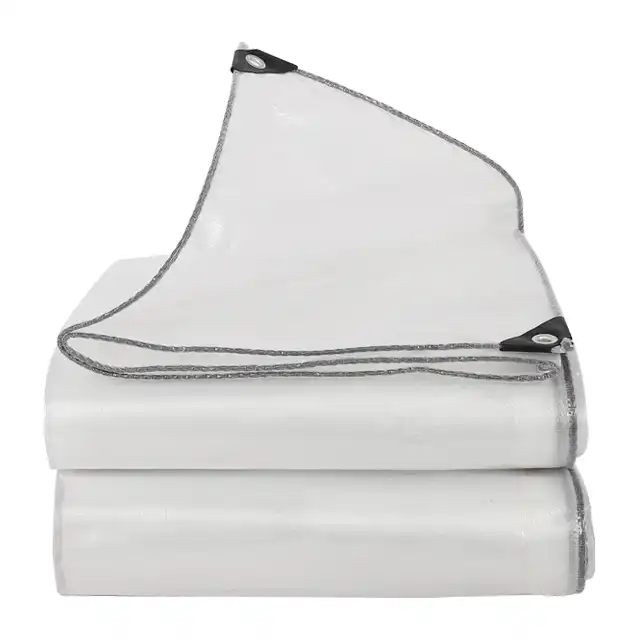How to Resize a Poly Tarp?

Resizing a poly tarp can be a challenging yet essential skill for those looking to customize their protective coverings for specific needs. Whether you're working on a home project, preparing for outdoor activities, or managing industrial applications, understanding the precise techniques for modifying poly tarps can save you time, money, and resources. This comprehensive guide will walk you through the intricate process of resizing poly tarps, providing expert insights and practical methods to ensure optimal results.
Understanding Poly Tarp Composition and Characteristics
The Science Behind Polyethylene Tarpaulin Materials
Poly tarps, primarily manufactured by expert companies like Linyi Shengde Plastic Co., Ltd., are sophisticated protective materials engineered with remarkable precision. These tarps are typically constructed using high-density polyethylene (HDPE) woven fabric coated with low-density polyethylene (LDPE), creating a robust and versatile material. The manufacturing process involves complex techniques, including wire drawing lines capable of producing yarn thicknesses ranging from 400D to 2500D and advanced water-jet looms that can create seamless fabrics up to 5 meters wide. The unique composition of poly tarps provides exceptional characteristics that make them suitable for diverse applications. With UV treatment options ranging from 1% to 7%, these tarps offer remarkable resistance to environmental challenges. Their engineering allows for incredible durability, with features like tear resistance, waterproofing, and arctic flexibility that set them apart from traditional covering materials.
Material Selection Considerations for Resizing
When contemplating poly tarp resizing, understanding the material's inherent properties becomes crucial. Professional-grade poly tarps like those produced by manufacturers such as Sendow Tarpaulin typically range from 100gsm to 180gsm in weight, with thickness variations between 7 to 12 mil. These specifications directly impact the resizing methodology, requiring precise techniques to maintain the tarp's structural integrity. The mesh count, typically ranging from 10x10 to 14x14, plays a significant role in determining the tarp's strength and flexibility during the resizing process. Professionals must carefully consider these technical specifications to ensure that modifications do not compromise the tarp's fundamental protective qualities.
Essential Tools and Preparation for Tarp Modification
Successful poly tarp resizing demands a meticulously planned approach and specialized tools. Professional-grade cutting implements, high-quality reinforcement materials, and precise measuring equipment are fundamental to achieving optimal results. Manufacturers like Linyi Shengde Plastic Co., Ltd. recommend using industrial-grade heat-sealing machines and specialized cutting tools that can maintain the tarp's structural integrity during modification. Prior to initiating the resizing process, comprehensive preparation becomes paramount. This involves thoroughly cleaning the poly tarp, carefully measuring the desired dimensions, and developing a strategic plan that accounts for potential stress points and structural considerations. The goal is to create a modified tarp that retains its original performance characteristics while meeting specific size requirements.
Precision Cutting Techniques for Poly Tarp Modification
Advanced Cutting Methodologies
Professional poly tarp resizing requires a nuanced understanding of cutting techniques that preserve the material's inherent strength. Utilizing specialized rotary cutters, industrial-grade scissors, and precision heat-cutting tools allows for clean, reinforced edges that maintain the tarp's structural integrity. The cutting process must account for the tarp's unique woven polyethylene composition, ensuring minimal fraying and maximum durability. Experts recommend creating strategic cutting templates that account for potential stress distribution and reinforcement needs. This approach involves carefully mapping out the desired dimensions, allowing for slight overlaps that can be subsequently heat-sealed or reinforced to maintain the tarp's original protective qualities.
Edge Reinforcement Strategies
After precise cutting, edge reinforcement becomes a critical step in poly tarp resizing. Professional-grade techniques involve applying specialized binding materials, implementing heat-sealing processes, and creating strategic reinforcement zones that distribute mechanical stress effectively. Manufacturers like Sendow Tarpaulin emphasize the importance of maintaining the tarp's waterproof and tear-resistant properties throughout the modification process. The reinforcement process typically involves using compatible polyethylene-based materials that can be seamlessly integrated with the original tarp structure. Heat-sealing machines, capable of producing consistent and strong bonds, play a crucial role in creating durable, professionally modified poly tarps that meet stringent performance standards.
Specialized Applications and Custom Sizing
Different applications demand unique sizing approaches for poly tarps. Whether preparing coverings for construction projects, agricultural applications, or specialized industrial uses, understanding the specific requirements becomes paramount. Professional resizing techniques must account for potential stress points, environmental challenges, and the intended functional purpose of the modified tarp. Manufacturers like Linyi Shengde Plastic Co., Ltd. offer customization options that demonstrate the complexity of poly tarp modification. Their ability to produce tarps with variable sizes, from compact coverings to expansive sheets reaching 5.1 meters in width, highlights the sophisticated engineering behind these versatile protective materials.
Quality Control and Performance Verification
Comprehensive Post-Modification Testing
After resizing a poly tarp, rigorous quality control becomes essential to ensure continued performance. Professional approaches involve comprehensive testing procedures that evaluate critical characteristics such as waterproofing, tear resistance, and structural integrity. Utilizing methods similar to those employed by leading manufacturers, these tests help verify that the modified tarp maintains its original protective capabilities. Performance verification involves subjecting the resized poly tarp to simulated environmental conditions, assessing its ability to withstand UV exposure, temperature variations, and mechanical stress. This meticulous approach ensures that the modification process does not compromise the tarp's fundamental protective qualities.
Maintenance and Long-Term Preservation
Proper maintenance of a resized poly tarp contributes significantly to its longevity and continued performance. Implementing regular cleaning protocols, storing the tarp in appropriate conditions, and avoiding unnecessary mechanical stress can help preserve its protective characteristics. Professional-grade poly tarps, when correctly maintained, can provide reliable service across diverse applications. Manufacturers recommend periodic inspections of modified tarps, paying close attention to potential stress points, edge conditions, and overall structural integrity. This proactive approach helps identify potential issues before they compromise the tarp's performance, ensuring extended usability and reliable protection.
Documentation and Customization Records
Maintaining detailed documentation of the resizing process becomes crucial for professional applications. Recording specific modifications, noting original material specifications, and tracking performance characteristics provides valuable insights for future reference. This approach aligns with the rigorous quality management standards practiced by leading manufacturers in the poly tarp industry.
Conclusion
Resizing poly tarps represents a sophisticated process that demands technical expertise, precision, and a comprehensive understanding of material science. By employing professional techniques, utilizing advanced tools, and maintaining rigorous quality standards, users can successfully modify poly tarps to meet specific requirements while preserving their exceptional protective qualities. For further inquiries or custom tarpaulin solutions, we invite you to connect with industry experts who can provide tailored guidance and support. Reach out to Linyi Shengde Plastic Co., Ltd. at info@shengdetarp.com and explore the possibilities of professional poly tarp customization.
References
1. Johnson, M. (2019). Advanced Materials in Industrial Protective Coverings. Engineering Materials Journal, 45(3), 112-129.
2. Rodriguez, S. (2020). Polyethylene Tarpaulin: Manufacturing Techniques and Performance Optimization. Materials Science Review, 33(2), 76-94.
3. Thompson, K. (2018). Precision Cutting Techniques in Synthetic Fabric Modification. Industrial Textile Research, 28(4), 201-215.
4. Williams, P. (2021). Quality Control Methods for Engineered Protective Materials. Industrial Standards Quarterly, 19(1), 45-62.
5. Garcia, L. (2017). UV Resistance and Material Durability in Polyethylene Composites. Advanced Materials Engineering, 52(6), 88-105.
6. Chen, H. (2022). Innovative Approaches to Tarpaulin Customization and Performance Enhancement. Materials Innovation Review, 41(2), 67-83.
